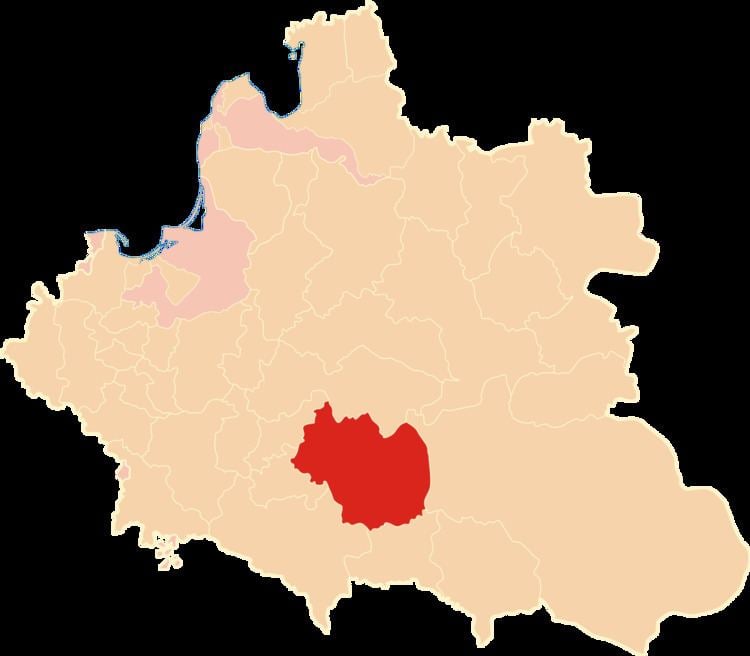1566–1795 → Established 1566 Area 38,324 km² | Political subdivisions counties 3 | |
 | ||
Volhynian Voivodeship (Polish: Województwo wołyńskie, Latin: Palatinatus Volhynensis) was a unit of administrative division and local government in the Grand Duchy of Lithuania from 1566 until 1569 and of the Polish Crown within the Polish–Lithuanian Commonwealth from the 1569 Union of Lublin until the Third Partition of Poland in 1795. It was part of the Ruthenian lands in the Lesser Poland Province.
Contents
Geography
The capital of the voivodeship was in Luck, and it had three senators in the Senate of the Commonwealth. These were the Bishop of Luck, the Voivode of Volhynia and the Castellan of Volhynia. Volhynian Voivodeship was divided into three counties: Luck, Wlodzimierz Wolynski and Krzemieniec. Local starostas resided in the three capitals of the counties, while sejmiks took place at Luck. The voivodeship had two deputies in the Polish Sejm, and one deputy in the Lesser Poland Tribunal in Lublin.
Zygmunt Gloger in his monumental book Historical Geography of the Lands of Old Poland provides this description of Volhynian Voivodeship:
“After Liubartas seized northern Volhynia, the Kingdom of Poland captured Red Ruthenia. A conflict between Poland and Lithuania began, complicated by the fact that in Ruthenian lands there were no well-defined boundaries of duchies and provinces. In 1366, King Casimir the Great confirmed his rule over the upper Bug river, capturing Wlodzimierz Wolynski. The conflict with Lithuania continued, as both sides wanted to control whole Volhynia, together with Luck (...) After the death of Svitrigaila, the vast Volhynian land became direct property of the Jagiellonian dynasty. King Casimir IV Jagiellon decided that Volhynia should become part of the Grand Duchy of Lithuania, but the Polish-Lithuanian conflict continued until the 1569 Union of Lublin, when Volhynia was transferred to Poland, and became a voivodeship. Its first voivode was Prince Aleksander Czartoryski (...)
Upon the decision of the Sejm, Volhynia was part of the Province of Lesser Poland. Its legal system was based on the Statutes of Lithuania, with local residents allowed to make changes to the statutes. Legal position of Ruthenian ruling class (knyaz) was equal to the Polish nobility, and in 1578, Polish government offices were established in Volhynia, followed by an infux of Polish settlers (...)
Administration
Voivodeship Governor (Wojewoda) seat:
Regional council (sejmik generalny) for all Ruthenian lands
Regional council (sejmik poselski i deputacki) seats:
Administrative division:
Voivodes:
